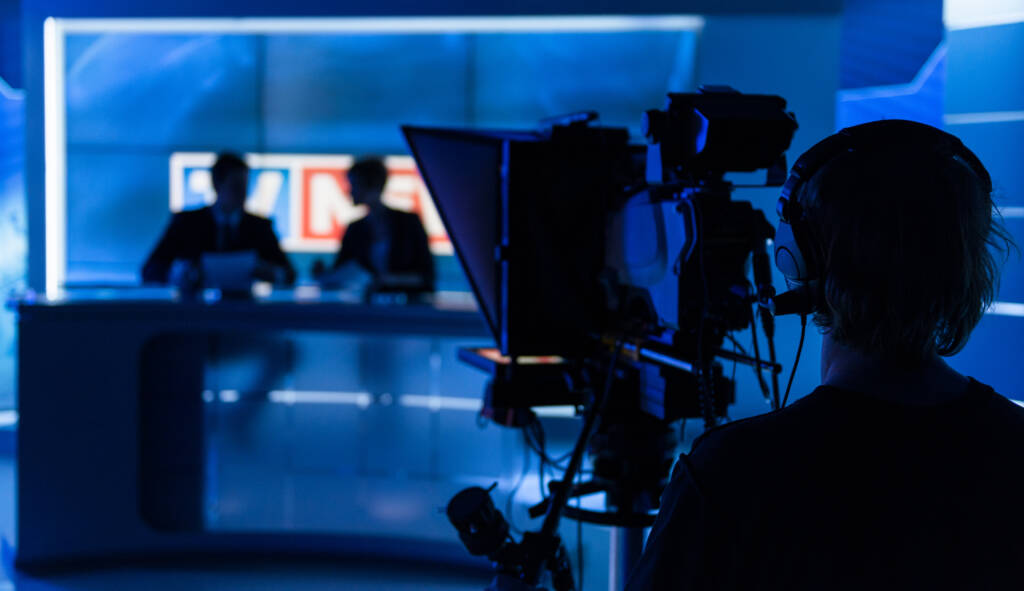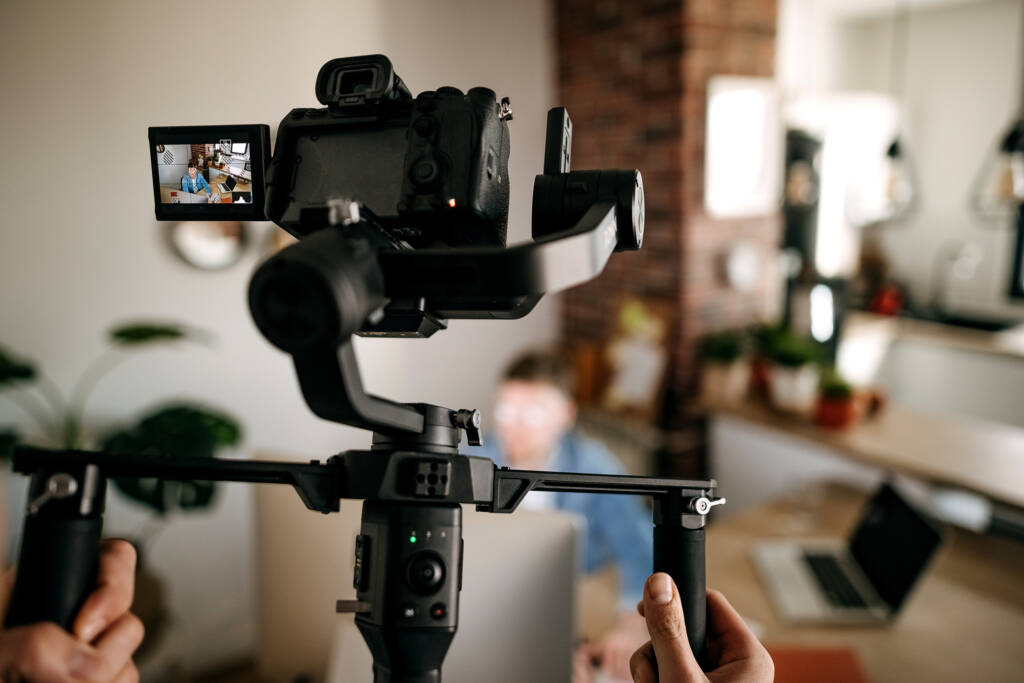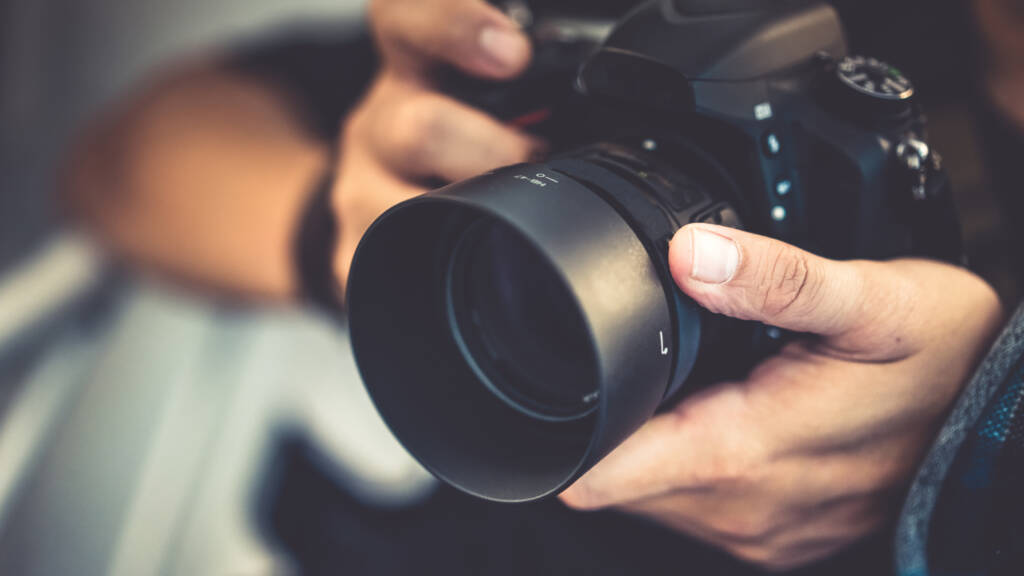
Journalism 1a

Journalism 1a: Introduction
Are you a storyteller at heart? Are you always the first one to know what’s going on at school or in your town and excited to share the latest breaking news? If so, you are the kind of person every online, print, and broadcast news outlet is searching for, and this may be the perfect course for you! Explore the history of journalism and see how social media and the digital world have changed the way news media operates. Learn the basics of press law, as well as the code of ethics journalists, should follow. Finally, understand how to make your writing and speaking more powerful, and discover the importance of pictures and images when telling a story.
During this course, you will learn career-related skills and earn a badge for this accomplishment. A badge is a digital certification of your career-related learning that you can share on social media or with higher education platforms, colleges, potential employers, peers, and colleagues. Select this link to learn more about badges.
Major Topics and Concepts
- Unit 1: The History of American Journalism
Identify the major historical trends in American journalism from the end of the 19th century into the 21st.
Recognize the connection between the changes in journalism and the introduction of new technology.
Understand how key events in American history reflect the changing trends in journalism.
Recognize major figures in American journalism and their contributions. - Unit 2: New Media Versus Old Media
Identify the roles of each genre of news media and its unique approach to communicating the news.
Analyze how the focus of each type of news media is reflected in particular stories, figures, and events.
Discuss the definition of “new media” and how it has changed journalism.
Explain how each type of news media has been affected uniquely by the Internet. - Unit 3: Press Law & Journalistic Ethics
Understand the history of press law, including the Constitution and international development of copyright law.
Identify the basic elements of press law, including copyright law and fair use exceptions.
Understand the basic code of journalistic ethics.
Analyze the difference between ethics and law.
Examine how a few key examples crossed the line of journalistic ethics and see the consequences of those acts. - Unit 4: Understanding Rhetoric, Bias, & Point of View
Understand the basics of the rhetorical triangle, including your role as an author or audience member.
Identify how point of view and bias can change the way an author or speaker approaches a subject.
Identify the role that bias plays in creating propaganda.
Analyze how journalists use rhetorical appeals and, potentially, logical fallacies.
Examine the dynamic relationship among audience, subject, and author/speaker, and understand how to adapt to different audience needs. - Unit 5: Photojournalism, Social Media, & Advertising
Understand how photojournalism developed and changed based on technology.
Explain the differences and similarities between journalism and photojournalism ethics.
Identify the way photojournalism has been affected by the Internet and cell phone technology.
Trace the beginnings of social media and how social networking affects journalism and journalists.
Identify the types of advertising and advertising’s relationship to journalism. - Unit 6: Freelance Journalism
Understand what it means to be a freelance journalist.
Identify the steps required to become a freelance journalist.
Explain how a freelance journalist can make a pitch.
Explore the benefits and risks associated with being a freelance journalist. - Unit 7: Documenting Life
Understand the purpose of a documentary.
Identify genres of documentaries.
Recognize famous documentary makers and their contributions.
Describe guidelines for making a documentary. - Unit 8: Citizen Journalism
Describe citizen journalism.
Explain what caused the rise of citizen journalism and its effects.
Understand the ethical responsibility of being a citizen journalist.
Explore tools used to create news as a citizen journalist.
Competencies
American Journalism
Students will demonstrate an understanding of American journalism by explaining yellow journalism, describing first-person reporting, and summarizing the modern news cycle.
New Media
Students will demonstrate an understanding of new media by explaining the old and new media, describing types of news media, and summarizing the impact of new media.
Journalistic Ethics
Students will demonstrate an understanding of journalistic ethics by explaining press law, describing protections for speech, and summarizing journalistic responsibility.
Rhetorical Triangle in Journalism
Students will demonstrate an understanding of the rhetorical triangle in journalism by explaining the use of rhetoric in the rhetorical triangle, explaining the use of bias in the rhetorical triangle and the use of point of view in the rhetorical triangle.
Power of Pictures in Journalism
Students will demonstrate an understanding of the power of pictures in journalism by describing the impact of technology on photojournalism, comparing journalism and photojournalism, and summarizing the impact of social media on journalism.
Freelance Journalism Career
Students will demonstrate an understanding of a freelance journalism career by summarizing the steps required to become a freelance journalist, describing the skills required to become a freelance journalist, and summarizing the benefits and risks of becoming a freelance journalist.
Documentaries
Students will demonstrate an understanding of documentaries by explaining the purpose of documentaries, describing types of documentaries, and summarizing the steps to making a documentary.
Citizen Journalism
Students will demonstrate an understanding of citizen journalism by explaining the effects of citizen journalism, summarizing citizen journalist ethics, and describing citizen journalist tools.

